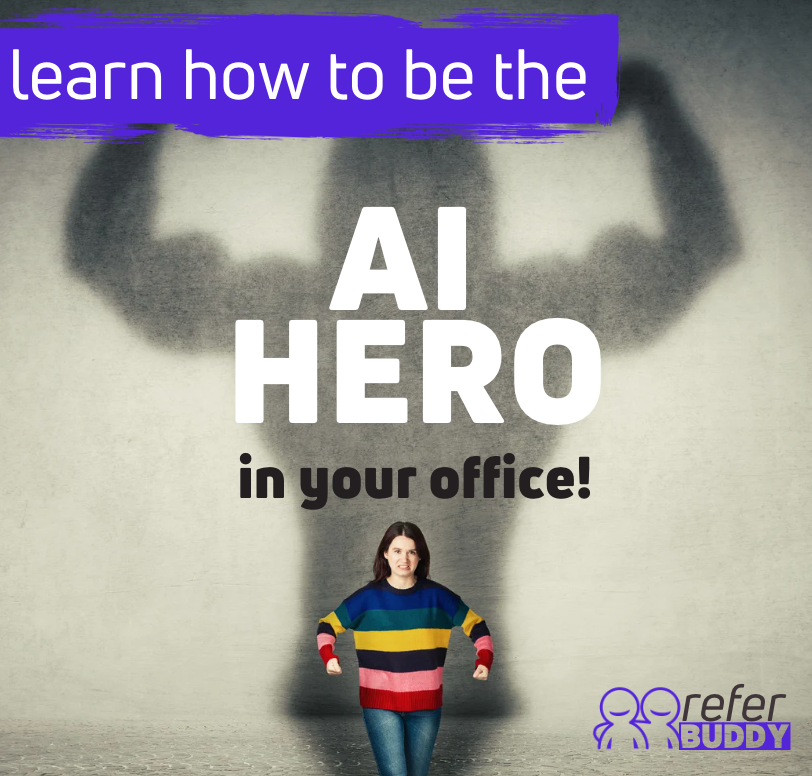Using LinkedIn to Find Your Next Career Opportunity
In a recent blog post called 5 Tips to Help You Find the Right Job, I talked about a mistake job seekers make that prevents them from finding the BEST jobs – the “hidden” jobs – the ones that never make it to a public job board.
Making this mistake ends up translating into hours of needless job searching..
So what is this mistake?
It’s failing to actively network (or build professional “relationships”) so that you can find out about these “hidden” positions the minute they become available!
I’m not talking about trying to be best friends or buddy buddy with everybody, but I am talking about being confident enough in the value you bring to the table as an employee so that you put yourself out there – reach out to people about your desire for career growth opportunities (A.K.A. a new job!). Making a simple and straightforward contact/“reach out” to someone is really all this about.
Reaching out to recruiters, hiring managers, friends of friends – all leads to greater potential that you can become an employee referral. What I mean by that is, if you can get referred to a job by an employee already within a company, it will expedite the entire job search and hiring process for you, exponentially.
So how do you go about building your professional network? Does this need to be something you spend hours doing each week?
Well, let’s make use of what technology has given us! Because it should save us time.. right?!
It seems like there is a social media platform for EVERYTHING these days – including job searching. Getting active on LinkedIn is literally you telling the universe you are ready to do the necessary effort that will result in quality jobs being attracted to you.
There are really two things that will help a potential employer want to hire you: trust and credibility.
LinkedIn provides a way for you to create both – build trust and credibility – by giving you a way to prove your skills and abilities AND have other professionals endorse that you can talk the talk and walk the walk.
LinkedIn is a social networking platform that has created an avenue for professionals to showcase their skills, connect with others, and endorse and recommend one another in their professional abilities and character. It’s also a way to follow companies and businesses you’d be interested in working for. AND it provides a way that you can reach out to recruiters and hiring managers!
In other blog posts, I’ve told you about Career Spirit Animals – professionals out there that are doing the job you want. Well LinkedIn is where you can find and connect with these kinds of people! Search for them by company or job title and use their career journey’s as a blueprint to model your own career path/journey after.
12 Steps for Creating a LinkedIn Profile and Network (the basics!)
#1 Upload a quality headshot and cover photo
They say a picture is worth a thousand words, show potential employers what they want to see: a put together version of yourself. What you would wear for a job interview is exactly what you should wear for this picture. If you can’t afford to pay a professional photographer, get in some diffused natural light (avoid direct sunlight, it creates too harsh of shadows on a person’s face) and ask a friend to take your picture with a *high resolution smartphone. (*You need to manually change the quality of the photo being taken to high resolution in the settings of the phone.)
[This article can get you started on the basics of using a smartphone to take a headshot. Personally, I would choose only VERY simple backgrounds (i wouldn’t use the bookcase like they did – it’s still too distracting). Keep the attention on your face! Whoever is taking the picture, have them back up and then use the zoom feature so your face proportions don’t get distorted by them being too close to you when they take the picture. Smiling is more likable than not smiling! Great article on different ways to smile for a professional headshot.]
Your cover photo should represent something about yourself professionally. Maybe you pick an image of you hard at work, or one of a project you did. This really can be anything (a quote, a nice sunset, whatever, but the truth is, the purpose of this whole profile is to get noticed by potential employers and build professional connections so I would use this as a guideline: “show, don’t tell.” The more your headshot and cover photo show what you are all about as a professional, the better.
[Selecting a cover photo: in that linked article the author poses this question: “Is there a certain image that would resonate with new connections or hiring managers in your current industry?” My advice to you would be to use a photo that clearly illustrates what you do!
If I could see a picture of you running the booth at the tradeshow, or you greeting volunteers at your company service event you organized, or you working with your team storyboarding in a meeting – these images create a stronger emotional response in the viewer than you picking some random stock photo of skyscrapers because you work in the middle of the city.. or a random picture that doesn’t directly relate to what you actually do.]
This approach may take a bit more thought and creativity, but in the long run, it will help you build a much stronger visual brand and connection to you for your network (potential employers, recruiters, professional connections you make).
Together, your headshot and cover photo are known as your “avatar.” If you want to create a solid presence online, you want your avatar to be consistent across different social media platforms and in your personal email account. [Most email providers give you a place to upload a picture of yourself that gets associated with your *email address – please, please, PLEASE go and change this picture to your professional headshot! Change your facebook picture to this profession image (especially if you are actively job seeking because potential employers love to look up their favorite candidates online).]
*Hey, and while you are at it, if your email address isn’t a professional one (that includes some variation of your name and initials: for example RyanK@refer.io is mine – not RytheKdizzleshizzle@refer.io) you REALLY need to update that too!!
#2 Come up with your professional “title”
Honestly, the level of “creativity” you put into this title should depend on your industry and what type of position you are seeking. Some say that you should creatively use this line to describe why you do the kind of work you do. Personally, I think there is nothing wrong with being straightforward and simply using your professional job title, but there are definitely ways to make sure this headline is “reeling people in” to read your profile (Hubspot has a lot of great resources for improving your LinkedIn profile, such as this article: How to Write a Professional LinkedIn Headline).
#3 Fill out your About section
Remember how I had you write an elevator pitch? (Here is the blog post to help.)Your About section on your LinkedIn profile is like a combination of your elevator pitch and a mini bio on “you” as a person – you can talk about your work ethic, what value you bring/add/contribute to the work you do, and what drives and motivates you.
If you want to make this section powerful, focus less on “what” you do professionally and more on “why” you do it.
Are you in nursing because you love people and helping them get back to health as quickly as possible? Did you go into architecture because at your core you believe buildings are what create the basis of society and our ability to connect as human beings?
TELL THE WORLD WHY you do what you do!
[Just for the record Hubspot doesn’t endorse us, I just love their company because of all the cool resources they put out there, INCLUDING this awesome “how to” write your LinkedIn bio with examples.]
#4 Create the sections on your education, work experience, volunteering, and other experience.
Okay, so what to include in these sections…
When you are applying for jobs, you should be tailoring every resume specifically to the particular job you are applying for. So then how do you tailor your LinkedIn profile? It should be tailored toward your dream job!
Find a Career Spirit Animal’s profile at a company you’d love to work for. What do they ncluded on their profile? Use theirs as an example for things you should include in yours, as well as skills and experiences you need to develop inorder to one day snag that dream role!
When you think about your dream job, and write out what kinds of qualifications you need to get it, reading your LinkedIn profile should sound like you are the perfect candidate for your dream job (or on your way to become the perfect candidate – skills you are developing, experiences, credentials you are in the process of obtaining, etc.)
The most powerful way to write about your experiences is by listing your contributions (not just what you were responsible for!) in the form of bullet points – just like you would on your regular resume.
I share all about how to do this in my blog post Change Your Resume to Get More Callbacks under “Mistake #7”. In that blog post, I go over how to write Power Statements: “Your resume lists of contributions that have been quantified.”
It is very important that you use strong past tense action verbs when you write these short Power Statements. Here is a helpful Indeed article: 195 Action Verbs to Make Your Resume Stand Out.
Also, keep in mind that keywords help optimize your LinkedIn profile so that you appear in search results that recruiters run for specific job titles/qualified candidates. (You can learn more about keywords in my blog post Let’s Get Your Resume to the Top of the Stack! under “Mistake #4.") This is why it is important to know what qualifications are needed for your dream job and make sure that they are clearly integrated into your profile.
#5 Select your skills (both hard and soft skills) including software you know that is relevant to your industry and career goals.
LinkedIn will suggest skills you should include based on what you put in your education and experience sections, but you aren’t limited to those skills it suggests. You can type in your own relevant skills that are applicable. You can also type in names of software that you are proficient or expert in. Notice I used the word “relevant.”
If you are looking for a specific kind of job, don’t list EVERYTHING you know how to do, because not all skills apply towards the industry or job title you are trying to get. Which skills, software, and technology applies to your career goal – those are the ones to focus on listing. Quality over quantity.
#6 Now, start adding connections! Look up former work colleagues. Connect with them, but also connect with friends and neighbors.
LinkedIn offers the option of importing your contact list from your email – I highly recommend doing this, mainly for the fact that it will save you a ton of time. Reason being, because it “mines” your contacts for you – specifically the ones that are already on LinkedIn. The platform can then make suggestions to you of people you may know (who are contacts of your contacts).
This becomes a “web.” LinkedIn literally links you in by connecting you with people professionally. You build a layer of contacts (known as your “1st” connections) and LinkedIn will help you find your next connections (your “2nd” layer of people that you should know).
#7 Go and endorse these individuals in the skills that they have put on their profiles that you know they have. Ask them to endorse your skills.
We are going over resumes in the next challenge email, but your LinkedIn profile is the equivalent to the online version of your resume. When it comes to the skills section of your resume, the main difference here is that you can get people to “endorse” that you actually have those skills!
The more established one of your contacts is on LinkedIn (they have a strong network of people and have been endorsed by many people for their skills and abilities) the more weight an endorsement from them holds.
When you get several endorsements for a skill, it is essentially your network saying to the professional world that you are highly proficient at what you do.
#8 Get some solid recommendations and give a couple solid recommendations.
This step will take a bit more time and energy, but it is well worth the effort.
You know how when you are looking to make a major purchase you like to read the reviews about the product? Well, this is the same thing here.
If you have worked hard and done an exceptional job for whatever company you currently or have worked for in the past, then to bolster that fact in the professional world, you want your current/former bosses, coworkers, colleagues and associates from work and the community to write a solid recommendation for you.
You can specify which projects or skills you want them to talk about in the recommendations. (A LinkedIn recommendation can be a paragraph or more; it doesn’t need to be a full length letter).
As you ask people to “scratch your back,” remember to reciprocate by asking if you can do anything for them, including writing a recommendation in return. ALWAYS follow up with a thank you note for them for taking the time to write you a recommendation!
#9 Follow companies and individuals you may be interested in working with or learning from.
In the “Interests” section, you can select companies and thought leaders you want to follow. This is an awesome way to get the latest information from the people and organizations you are most “interested” in and is a way to show them that they are on your radar–whether for a future job opportunity or just because you are a fan of what they say and do.
Additionally, you can go to individual companies and sign up for job alerts DIRECTLY on their company LinkedIn page/profile.(There is also an awesome feature where you can look up their current employees and see if you have any mutual connections in common!)
#10 To build your network more: Join industry groups on LinkedIn (Facebook, and other social media) and engage with them.
LinkedIn is a social networking platform in it’s own way. Make use of these great opportunities to learn from people who can help you become expert at what you do and advance in your career through their advice that is specific to your industry. This can be a great way to find “spirit animals”/ potentially seek out some mentorship opportunities.
#11 Fill out all other relevant sections.
Everything I just had you do I refer to as “the basics.” I get it that the basics took you more than a hot second, but if you really want to create an even more powerful LinkedIn, once you’ve done the basics, I recommend you take it to the next level.
This article by LinkedIn’s Senior Content Marketing Manager provides 20 Steps to a Better LinkedIn Profile and can help you find that extra edge on the platform.
#12 Create your personal LinkedIn URL and put it at the top of your regular resume
This is a quick guide on how to create your personal URL for your LinkedIn profile.
Bonus tip/advice: Clean up other social media and make sure you are professional EVERYWHERE online
Google search yourself, checkout what information exists online about you. If you don’t like what you find, do what you can to clean it up! There are certain types of records you can get expunged; others you may have to do more work to get rid off.
Run these same searches for yourself in the search bar on social media platforms. Find out what is floating around out there that is publicly accessible. Get rid of the unflattering stuff ASAP. View your social profiles in a public mode (see what EVERYONE else can see) – make sure it is what you want.
Doing these things will improve your presence online and increase your marketability as a quality job candidate – for sure!!! Don't be surprised if the universe response with job offers. Good luck, and let us know how all this goes for you in the Refer Facebook group!

Ryan Kay
Helping people get the career of their dreams!
Related articles

Office Sidekick: Work Smarter, Not Harder, with ChatGPT!
Are you a mom juggling work tasks and household duties like a circus performer? Do you wish you had more time for bedtime stories and quality time with your family? Well, we've got great news for you! Our upcoming webinar is tailored specifically for modern supermoms like you who want to level up their office game with the help of AI.

Finding the Perfect Side Hustle: A Step-by-Step Guide
Discover how to find the perfect side hustle for your lifestyle and goals!